IB Psychology - End of Year study
1/99
There's no tags or description
Looks like no tags are added yet.
Name | Mastery | Learn | Test | Matching | Spaced |
|---|
No study sessions yet.
100 Terms
Geert Hofstede
An influential Dutch social psychologist who studied the interactions between national cultures and organizational cultures and created cultural dimensions - such as individualism to conformity
Berry (1967)
Modification of the Asch experiment used between two cultures: the Temne culture (agricultural-based, need to cooperate to feel the community) and the Inuits (hunting-based, need to be independent). Inuits were generally non-conforming, whereas Temne were conforming.
Bond and Smith (1996)
Conducted a meta-analysis of the results of 133 studies that had used Asch's line judging task in 17 different countries.
Found that people from more individualist cultures conformed less often than those from more collectivist cultures.
Barry et al (1959)
This study compared 46 cultures around the world ranging from low to high food accumulation. They measured child training practices. High food accumulation cultures placed more emphasis on responsibility and obedience, whereas low food accumulation cultures placed more emphasis on encouraging independence, achievement and self-reliance. This could explain why some cultures conform more than others.
Torres et al (2012)
Correlational study on American Latinos. Participants who had higher levels of perceived discrimination also experienced higher levels of acculturative stress. the higher levels of acculturative stress also correlated with psychological distress.
Sherif et al (1961)
Field experiment - to study whether conflict between groups could be diminished if they worked together on a superordinate goal. The study revealed one of the ways that intergroup conflict and negative intergroup attitudes may emerge. The study has been used to explain how racial prejudice and discrimination may arise between ethnic groups as a result of competition for resources. Developed the Realistic Group Conflict Theory
Pettigrew and Tropp (2000)
conducted a meta-analysis of 515 existing studies on the contact hypothesis and found there was significant evidence to support the theory, as their findings suggest that "intergroup contact typically reduces intergroup conflict" and when intergroup contact meets the conditions of Allport's theory, there is an even greater reduction in prejudice between in-group and out-group members.
Allport (1954) contact hypothesis
Prejudice may be reduced by equal status contact between majority and minority groups in the pursuit of a common goal
The effect is greatly enhanced if it leads to the perception of common interests and common humanity between members of the two groups. Contact between groups will improve intergroup relations if the following conditions are met:1. equal status of groups within the contact situation2. intergroup cooperation (cooperative independence)3. common goals4. support of authorities, law or custom (intergroup contact occurs in the context of supportive norms)
- Aronson, et al. (1978) "Jigsaw Classroom"
Developed to address problems caused by desegregation in US schools, to be used in mixed ethnic background classes. Goal is to facilitate recategorisation. Small groups of 5-6 mixed ethnic members. To-be-learned material split into different sections. Each section given to 1 member of each group, must be taught to rest of group. 'Expert' groups with similar material: different abilities mixed so all can present to the group. Re-joining group as true 'expert'. All members of group important (interdependence) to achieve the group goal and thus well liked.
Tajfel and Turner (1979)
Stemming from work done in the early 1970s, these surveys/observations aimed to show that group-based social identities are based on in-groups and out-groups. Concluded that in-groups are seen as more positive than out-groups and favoritism is more common in in-groups. A supplement to the RCT. SIT is a theory that explains how belonging to an in-group can affect our thinking and behavior
Tajfel 1971
The minimal group paradigm design in an experiment involves participants being randomly assigned to a particular group. The groups are chosen completely arbitrarily, meaning there is no reason for why a participant is put in one group or the other. The participants have nothing in common with other members of their in-group, which is where the "minimal group" phrase comes from: they are formed based on the basic definition of what it means to be a group in that they are simply grouped together. The minimal group paradigm studies offer empirical examples of the effects of group dynamics on discrimination. Minimal group studies consistently demonstrate the effects of identifying with a group on how individuals favor their own group over the expense of others: i.e. they demonstrate in-group bias.
Cialdini et al. (1976)
Conducted a field study where they counted the number of college sweatshirts and t-shirts worn by students on campus after their football team had just won or lost a game. They found that after a victory students were more likely to wear clothing that showed their college's name. College students were more likely to describe the team using the pronoun "they." When they won, on the other hand, suddenly they would say "we."
Park and Rothbard, 1982
Explored the hypothesis that in-group members perceive their own group as more variegated and complex than do out-group members (the out-group homogeneity principle). Researchers asked (using questionnaires) 90 members of 3 campus sororities to judge the degree of intragroup similarity for their own and 2 other groups. Again, each group judged its own members to be more dissimilar to one another than did out-group judges. The results showed that they typically judged the out-group sorority members as being more similar to each other than girls in their own sorority.
Jane Elliot Experiment
Segregated primary school class into two groups based on eye color. Told blue eyes meant you were smarter, quicker and more successful. Brown eyes meant you were lazy, untruthful, and stupid. Blue eyed children were given privileges. A few days later the roles were reversed. Children who were praised felt dominant and more confident in their abilities. They performed better at school and in general. On the other hand, the children who were treated as though they were inferior performed worse and felt unconfident.
Phelps et al (2000)
Researchers measured the neural activity in the amygdala because of its role in emotional learning and the evaluation of social stimuli (e.g. determining if a social stimulus is dangerous or harmless). They conducted their study on white participants by initially placing them in an fMRI viewing a range of black and white faces that were taken from a college yearbook. After the fMRI testing, they did tests to measure the participants' implicit racial attitudes using the IAT. They found similar results to other studies in that their white participants had a slower time for pairing face/word combinations of black/good and a faster time for white/good combinations. A second finding from the study was that a majority of the participants had higher amygdala activation when they were viewing black faces (racial out-group members). There was a positive correlation between the activation of the amygdala and the results of the implicit association test: participants that had a stronger implicit racial bias also displayed stronger amygdala activation.
; biological argument against SIT.
Cohen et at. 1981
To demonstrate whether people are more likely to remember schema-consistent information. To test the effects of prior knowledge on the processing of new information. Participants were more likely to remember schema consistent information. Those who were told the woman was a waitress remembered details more consistent with a waitress stereotype, such as drinking beer, Listening to pop music. If they were told she was a librarian they remembered details consistent with this stereotype, such as that she received a book for her birthday, spent the day reading and liked classical music.
Stone et al (2010)
Studied effects of stereotypes on judgement (confirmation bias) in the white/black basketball player study. Participants who viewed black athlete ranked as "significantly more athletic ability and having played a better game"
Participants who viewed white athlete ranked as "exhibiting more basketball intelligence and hustle"
Bransford and Johnson (1972)
Washing clothes, experiment investigating the stages where schemas are introduced and able to manipulate processing. The context before condition made a difference. Hearing the same passage twice makes almost no difference in terms of comprehension and memory; presenting the context after the passage is no good; and a partial context (which shows the objects but not relations between them) is only marginally better than no context at all.Using the schema theory, these findings can be interpreted by referring to a "mental representation" that the full context picture creates prior to hearing the text passage. After the schema has been created (or activated) it influences the organization of our knowledgearguably, the idea units from the text passage are more effectively encoded because, in the process of encoding, they are linked with the schema
Bartlett (1932)
A: See how memory of a story is affected by previous knowledge (i.e. schema)
P: Used serial production by telling British participants an unfamiliar story- War of Ghosts-
R: P's changed story as they tried to remember it: distortion (assimilation, leveling and sharpening), but participants did remember the overall theme
C: Remembering is an active process, where information is retrieved and changed to fit into existing schemas to create meaning in the information- supports the reconstructive theory of memory and schema theory
E: Lab study (eco. validity), non-rigorous methodology
Loftus and Palmer (1974)
*students watched clips of car accidents and were then given questions- one of which was a leading question. (different people were given slightly different questions)
*the verb 'contacted' resulted in a mean estimate speed of 31.8 mph.
*the verb 'smashed' was 40.5 mph.
Misinformation effect
argue that two kinds of information go into a person's memory of an event; the information obtained from perceiving an event and the information supplied to us after an event. Over time the information from these two sources may become so integrated that we are unable to tell from which source they originally came from, all we have is one memory (known as the 'reconstructive hypothesis').
Bechara et al (1995)
(1) Healthy participants were able to slowly move away from the disadvantageous decks and choose more from the advantageous decks that had low initial reward but higher long-term gains; (2) The vmPFC lesion participants, however, did not show the same shift in behavior--they continued to choose from the disadvantageous decks, regardless of the negative consequences; (3) Suggests that the vmPFC plays a role in our abilities to use system two processing. If this part of out brain is damaged, we may not be able to think past initial impulses, way up more factors, and base our decisions on consequences, which are all fundamental characteristics of system two processing. This might lead to decisions being made based on system one, which is impulsive and automatic.
Cohen et al. (1996)
- Higher testosterone and cortisol increase in Southerners from the culture of honor- More aggressive behavior observed in Southerners.
Southerners: more likely to consider aggression as an appropriate response to insults due to culture of honor - Seeing their reputation and masculinity diminished by the insult, their cortisol and testosterone levels increased to counter-balance self-esteem -cultural values can influence behavior (aggression)
Bandura et al. (1961)
Results- The children who had observed the aggressive models were far more aggressive verbally and physically. Also, girls were more likely to mimic verbal aggression, and boys, physical aggression, and more commonly from their same-sex model.
Conclusion- social learning theory is demonstrated.
Weiskrantz (1956)
the monkeys who has their amygdalae lesioned were quite tame and had apparently lost their fearful reactions to humans. They would even approach the researchers. The control group, on the other hand, continued to display the same pre-surgery levels of fear towards the humans.
It appears that the amygdala, located in the temporal lobe, might be associated with fear.
Rosenzweig and Bennett (1972)
Placed rats in enriched (EC) or impoverished condition (IC). Studies of their brains showed that those that had been in the stimulating environment had an increased thickness in the cortex. The frontal lobe, which is associated with thinking, planning, and decision making was heavier in the rats that had been in the stimulating environment. The brains of rats will grow more if they are provided with external stimuli.
Luby et al (2013)
#1 - poverty was associated with less white and grey brain matter and smaller hippocampus + amygdala - positive correlation between supportive parenting strategies (praising child for waiting) and higher hipppocampmus volume
#2 Poverty, parenting styles and stress are all factors that can negatively affect the development of neural networks in the hippocampi. High exposure to stress can affect memory because it can lead to reduced development in the hippocampus (responsible for learning and memory)
Perry and Pollard (1997)
Results showed children who had experienced global neglect had the greatest difference in head circumference, which suggests decreased brain growth and the greatest amount of abnormalities in their brain scans; they had less volume in their corticies. In conclusion children who experience global neglect in the form of sensory deprivation may have less brain growth and fewer neural pathways formed in the brain
Lazar et al (2005)
Results: meditators significantly thicker cortexes, decreasing thickness in control as age increases, same thickness in meditators. In one specific region the average cortical thickness of the 40-50-year-old meditation participants was similar to the average thickness of the 20-30-year-old meditators and controls, suggesting that regular practice of meditation may slow the rate of neural degeneration at this specific area. In conclusion: Meditation (mindfulness) increases synaptic connections in cortex of brain, increasing its volume and strength and reduces appearance of cortex thinning.
Caspi et al (2002)
Findings were that MAOA low expression variants didn't correlate with increased probability of aggressive behavior. The MAOA low expression variants with early life adversity produces significantly greater risk of aggression, then the same variants without early life adversity. Early life adversity produces significantly greater risk of aggression than no early life adversity. Conclusions are that early life adversity produces changes in neurotransmission which floods the body with serotonin and neuro-adrenaline when is threatened which cannot be metabolized to returned levels to normal because of a poorly managing MAOA gene. Serotonin activates the amygdala.
Meyer-Lindenberg et al (2008)
Results were when viewing fearful or angry faces, the MAOA-L group had significantly increased activity in their amygdala, and reduced activity in their ventral medial prefrontal cortex. MAOA-L participants also had less grey matter volume in amygdalae. Conclusions are that the MAOA-L gene may correlate with aggression and impulsive behavior and emotional reactions. vmPFC function is to regulate impluses and decision making therefore, reduced activity may lead to an inability to regulate impulsive aggressive reactions. Aggressive reactions are also more likely due to high amygdala activity as this part of the brain is responsible for the stress response and the perception of treat, therefore higher activity may lead to an increased perception of threat and aggressive response to that threat
Grafman et al. (1996)
Results: (vmPFC) lesions reported highest scores on aggression/violence scale; generally associated with verbal confrontations rather than physical assaults. Conclusion: vmPFC damage can increase the risk for aggressive behaviour; not necessarily the size of the lesion that leads to more aggressive or violent behaviours. triggering factors included disruption of family activities
Feinstein et al (2011)
Results: SM showed no fear response to horror movies, to dangerous animals or to the haunted house, reported not feeling any fear. Instead she felt excited and intrigued. Conclusion is that the amygdala has an important role in the fear response, recognition and experiencing fear. Damage to the amygdala results in being unable to experience fear.
Albert et a. (1986)
Results: Castrated rats with no access to testosterone had reduced signs of aggression (biting & attacking) and rats without operations (or no change in testosterone) did not change significantly. those with decreased testosterone lost their social position. Conclusion is that testosterone is an evolutionary adaptation increasing chances of survival. testosterone is responsible for aggression and social dominance. Higher testosterone increases aggression and dominance of other rats. By experimenting on rats, researchers are able to determine correlations between biological factors and behavior. Reduced testosterone decreases aggressive behavior and also plays a role in social dominance.
Ahs et al (2009)
Results: The researchers found there was a strong correlation between the activation of the amygdala in the right hemisphere of the brain and the participants feelings of distress when viewing spiders and snakes.
It was concluded from this that the amygdala in the right area of the brain is responsible for the anxiety response in specific phobias.
Bandura et al (1963)
Overall, the boys displayed more violent behaviors than the girls in all conditions. However, the girls were more inclined to sit on the bobo doll than the boys. The gender of the model was also an influential factor. For example, children that watched the male model were more inclined to use "aggressive gun play", even though the model didn't use the gun. The results also showed that the sex appropriateness of the model's behavior also influenced the likelihood that the subject would imitate that behavior. For example, boys who watched the female model were more likely to sit on the bobo doll and not punch it in the nose. Thus, social learning depends on whether or not the child believes the model is acting appropriately for their gender. This concludes that children will imitate filmed aggression in the same way as live aggressive role models. It also concludes that watching filmed violence is NOT cathartic. Instead of becoming less aggressive after watching aggressive film or cartoons, the children showed more aggression.
Passamonti et al (2012)
Results
- showed that there was reduced brain activity in the frontal lobe during the low serotonin conditions when the participants were viewing the angry face- Low brain serotonin levels inhibited communication between the amygdala and frontal lobes compared to communication present under normal levels of serotonin. Conclusion
- Amygdala associated with emotional reactions, and frontal lobe associated with regulating emotional reactions, therefore when serotonin levels are low, it may be more difficult for people to control and regulate emotional reactions
Desbordes et al. (2012)
Results
the group that did mindfulness training had the lowest amygdala activity when exposed to angry faces. they also had an improved connection between the PFC and the amygdala. Conclusions
Mindfulness may alleviate the stress response while exposed to a threat. Since it improved the connection between the PFC and the amygdala as well, it may also be suggested that the process of decision making in threatening situations may also be improved by mindfulness.
Goetz et al (2014)
Results -participants showed increased reactivity in the amygdala and hypothalamus when viewing images of angry faces although there was no impact when viewing the other facial expressions. Conclusion- The function of the amygdala and hypothalamus may be increased by higher testosterone levels. Higher levels of testosterone may cause an individual to be more prone to aggressive responses and have a heightened stress response when detecting a threat
Radke et al (2015)
Results: Treatment group had greater activation in their amygdala when approaching the angry faces than the control group. No significant different in PFC activation between groups. Conclusion: High levels of testosterone may increase the activation of the amygdala in response to a threat, which will result in more emotional and physical readiness to react aggressively. No significant difference in pfc activation so, greater levels of testosterone may lead to a greater preparation to react aggressively but does not necessarily lead to an aggressive response. PFC is still able to regulate emotions and impulses
Raine and Baker (2007)
results-Heritability of anti-social behavior always came to around 50% no matter which measure. conclusion
Shows the mix of environment and genes on anti-social behaviour. The conclusion that was drawn from this finding was antisocial behavior in these kids was about half drawn from genetics and half explained by environmental factors.
Batson et al. (1981)
Participants tested individually, filled out a questionnaire beforehand. Led to believe that they were an observer of a girl, Elaine, who was being tested on digit recall. Description given as relatable (high empathy) or unrelatable (low empathy). Watched pre-recorded video of Elaine, after two trials she received electric shock. Clearly displayed pain. Participants asked if they would like help her by taking her place. Half otherwise they could fill out a questionnaire and leave (easy escape). Other half told they must watch the remaining 8 trials before leaving (difficult escape)Participants had to say what they chose, then were debriefed and experiment ended.
High empathy condition: Most participants agreed to help Elaine, no matter difficulty of escapeLow empathy condition: Most participants withdrew in the easy escape, when it was difficult some offered to help, could support negative state relief model
Levine et al. (2001)
[A] Investigating prosocial behavior in different cultures
[M]
-Explored prosocial behaviour of 23 different countries
-Field experiments conducted in city, using staged scenarios
1) Pedestrian drops pen
2) Pedestrian wearing leg brace drops magazines
3) Blind pedestrian with cane waits at traffic light for help crossing the road
[R]
-Top 5 cities for helping were; Rio de Janiero, San Jose, Lilongwe, Calcutta and Vienna
-Bottom five were Amsterdam, New York, Signapore, Kuala Lumpur, Sofia
-Relationship found between greater purchasing power pet capita and less helpful behaviour
-Relationship between Roman Catholicism and helpful behaviour
[C]
-Different cultures have different levels of prosocial behaviour
[E]
+ Ecologically valid
+ Easy to replicate
+ Low cost
- Time consuming
- Uncontrolled (did not occur in controlled environment like lab)
- Helping might vary due to time period
- Many possible confounding variables
- Unethical (no consent)
Steblay (1987) and Levine (2001)
Meta-analysis 65 studies - lower helping/prosocial behavior in cities with more people. (Steblay) Helping rate begins to decline when population passes 300,000 (Levine)
Darley and Latane (1968)
The participant was seated in a small waiting room to fill out a preliminary questionnaire. After some time smoke began to enter the room through a wall vent. Some participants were in the waiting room alone. Some were in the room with two confederates acting as naive participants. Confederates were instructed to act indifferently and to pay little attention to the smoke, just carry on with the questionnaire.- Some were in the room with two other real participants.
In the alone condition 75% of participants reported the smoke; it took them two minutes on average.- In the condition with two passive confederates only 10%reported the smoke. The others coughed, rubbed their eyes and waved the smoke away from their faces, but continued to work on the questionnaire.- In the condition with three naive bystanders, only 38%of the group reported the smoke.- In post-experimental interviews participants reported that they thought the smoke looked "strange" and that they were not sure it was dangerous. They thought it could be steam or air-conditioning vapour, smog or even a "truth gas" filtered into the room to make them answer the questionnaire honestly.
Seeing other people remain passive in an ambiguous situation decreases the likelihood of intervening because participants do not interpret the situation as dangerous(pluralistic ignorance). Informational Social Influence
Atkinson and Shiffrin's (1968)
Multil-Store Model (MSM) of Memory
Peterson and Peterson (1959)
Subjects asked to remember 3-consonant groups (tri-grams)
Prevented subjects from rehearsing by counting backward by threes (known as a rehearsal-prevention task)
After 3 seconds, subjects recalled letters only half the time
After 12 seconds, subjects recalled letters about 13% of the time
After 18 seconds, memory for letters almost completely gone
Without active processing (like rehearsal), short-term memories die quickly
Milner and Scoville (1957)
HM, head injury that caused him to have epileptic seizures, surgery that removed tissue from the temporal lobe, including the hippocampus, recall information in early life but could not form new memories.
Multi-store model
A representation of how memory works in terms of three stores called sensory register, short-term memory and long-term memory. It also describes how information is transferred from one store to another, how it is remembered and how it is forgotten.
Case of H.M. (Henry Molaison)
-Experienced debilitating seizures, removed hippocampus of his brain at the age of 27.
- this man had really bad seizures so they removed he hippocampus and parts of the temporal lobe and the seizures went away but he suffered massive anterograde amnesia and moderate retrograde amnesia
- maintained normal short term memory
- motor memory stayed intact
- this showed that the hippocampus is extremely important in regards to forming new memories
Baddeley and Hitch (1974)
Proposed the working model of memory with subsystems for memory processing and storage.
Working memory is short term memory and there are different systems for different types of information
Central Executive: divides the system and deals with cognitive tasks, e.g. mental arithmetic
Visuo-Spatial sketchpad: stores & processes info in a visual or spatial form
Phonological Loop: deals with spoken & written material
Working Memory Model
is an alternative theory to the short-term memory model and is used to emphasize the active memory part, in which information that we are consciously aware of are 'worked on' in many ways. Each component is separate but interdependent of one another as well as each having a limited capacity. This model aims towards explaining how memory deals with complex and important cognitive activities (knowing, perceiving, remembering...) instead of only capacity, duration and rehearsal.
Robbins et al (1996)
Aim
to study the role of the central executive in remembering chess positions by investigating the effect of generating random letter strings.
Method
· 20M chess players (mix of strong and weak)· Repeated measures design quasi experiment· Dual task paradigm1. P's asked to memorise position of 16 chess pieces in 10 seconds, whilst generating random letter sequences2. P's asked to memorise position of 16 chess pieces in 10 seconds, whilst saying 'the, the, the...' in time with a metronome.After 10 seconds P's were asked to arrange chess pieces in those positions on a separate chess board.
results
· P's in articulatory position performed well in recalling positions of chess pieces· P's in letter generation performed poorly
Conclusion
· The central executive played a role in remembering chess positions.· The phonological loop was not involved in remembering chess positions.
Evaluation
- low generalisability (culture and gender)+ high internal validity (random allocation, lab exp.)
Klingberg et al. (2005)
Aim: to see if computer games could improve working memory capacity and reduce attention problems. 42 kids with ADHS were assigned to two condition: either a computer game designed to improve working memory that got harder or the same game but not designed to stretch their capacity (didn't level up and get more challenging). Results: those in the first condition improved their working memory capacity and reduced ADHD-related behaviors.
Buchanan and Lovallo (2001)
Aim: To see effect of cortisol in emotionally arousing context
Hypothesis: cortisol would enhance memory performance of emotionally arousing pictures but not neutral pictures
Experiment:
48 Participants (24 male, 24 female)
Double blind, placebo controlled, between subjects
Groups would receive either cortisol dose (20 mg) or placebo. Participants viewed emotionally arousing pictures and neutral pictures. Participants were called back to see memory performance on recall of pictures. There were 60 pictures (20 each for positive, negative, and neutral). There was a free recall test and then a cued recall test. Two independent scorers scored responses. There was also a recognition test where 60 new photos were added to the 60 original and participants were asked to rate pictures based on emotional arousal and valence.
Results:
-cortisol dose increased memory for pics in cued recall
-cortisol may enhance long term recall of emotionally arousing stimuli
Elzinga et al. (2003)
showed that a after exposure to trauma-related stimuli, women who had PTSD as a result of childhood abuse showed increases in cortisol levels. In this study, after reading scripts that were designed to remind the participants of the trauma they had experienced, they had cortisol levels that were 122% higher than non-PTSD controls.
Sapolsky et al (1990)
Aim: Investigate if excessive cortisol secretion as a result of prolonged stress have a deleterious effect on the hippocampus.
Methodology:
- 4 vervet monkeys (aged 5-8 years old) previously quarantined for 30 days to make sure they were healthy
- 2 cortisol pellets were implanted contralaterally in the hippocampi of these monkeys
- As a control, cholesterol pellets were implanted on four different monkeys
- The monkeys were euthanized after 1 year
Results:
- Cholesterol side had mild cell irregularities
- Cortisol side showed significant damage to the neurons, including soma shrinkage, dendritic atrophy (shrinking and decay of dendrites)
Conclusions:
- Prolonged exposure to stress, thus an excessive secretion of cortisol can have detrimental effects on the hippocampus, causing a decreased length and branching of dendrites, inhibition of neurogenesis (stops formation of new neurons), and cause neurons to die.
Connection to PTSD:
- Prolonged stress common in PTSD patients, due to a hyper-responsive amygdala, can have detrimental effects on memory, as the high levels of cortisol over time may reduce the functioning capabilities of the hippocampus. Shows cognitive symptoms of PTSD such as impaired memories and the inability to remember particular details about the traumatic event.
Limitations: Strong body of research shows that PTSD patients often have lower than normal levels of cortisol. For instance, this could be because of a damaged adrenal glands, due to severe stress caused by a traumatic event.
Gilbertson et al (2002)
Aim: Investigate whether a decreased volume of the hippocampus was a symptom or etiology of PTSD, using 34 identical twins (monozygotic twins).
Methodology:
- Case control design, where one twin was a Vietnam war veteran (exposed to combat) and the other wasn't.
- Use of monozygotic twins eliminated any other variable that could affect hippocampal structure (as they share 100% same DNA)
- Two different types of sets of twins were used: one group of twins where one had developed PTSD as a result of being a war veteran and the other did not go to war and did not have PTSD either.
The other where one was a Vietnam war veteran with no PTSD and the other twin hadn't gone to war and had no PTSD either.
- Researchers used an MRI scan to measure hippocampus volumes.
Results:
- Key comparison between the twins that did not got to war (trauma unexposed).
- The twins of the war veterans that developed PTSD were found to have lower volumes of the hippocampus compared to the twins of those that were veterans without PTSD.
- Veterans with PTSD also showed 10% less hippocampus volume than those veterans without PTSD.
- Negative correlation found between symptom severity and volume of the hippocampus (higher symptom severity correlated with lower volume of hippocampus)
Conclusions:
- Findings suggest that a lower volume of the hippocampus is a factor that increases the vulnerability of developing PTSD (etiology not symptom).
Considerations:
- PTSD can also lead to a reduction of the hippocampus, as high levels of cortisol kill off the cells of the hippocampus and prevent the formation of new neurons.
- Population validity: sample deals with war veterans only, who suffer from PTSD. Effects and symptoms may vary across exposure to different types of traumatic events. Ex. sexual abuse as a child may lead to not wanting
Urry et al (2006)
Aim
To investigate the effect of cognitive reappraisal on amygdala activation
Type of Experiment
True Experiment
Participants
19 participants
Procedure
1) In fMRI2) Exposed to a range of emotionally unpleasant stimuli (carefully selected)3) Reappraisal was manipulated - command given as they saw each image4) Brain activity was measured
Results
Higher activation of vmPFC during cognitive reappraisal to decrease the effect of the emtional stimulus=reduction in the activation of the amygdala
Conclusions
If a patient has abnormalities in their vmPFC, they may not be able to perform reappraisal of affective stimuli
Symptoms of PTSD
- Elevated sense of arousal and anxiety (negative emotion)
Hitchcock et al (2015)
AIM
investigated correlations between negative appraisals after experiencing a traumatic event and the development of PTSD symptoms
PARTICIPANTS
- children aged 7-17 years- admitted to hospital because they had experienced a one-off traumatic event(e.g. car accident, injury, house fire, etc.)
PROCEDURE (PTSD measure)
CORRELATIONAL STUDY- symptoms of PTSD were measured within 1 month of the trauma & 6 months later- using the "Clinically Administered PTSD Scale (CAPS) (modified for children)
PROCEDURE (appraisals measure)
negative appraisals were measured using a 25-item self-report questionnaire called the "Child Posttraumatic Cognitions Inventory (CPTCI)
RESULTS
there was a moderate but statistically significant correlation between negative appraisals and PTSD symptom severity after 6 months
CONCLUSION
the study shows how (negative) appraisals can increase the chances of developing PTSD after experiencing trauma(thus the role of top-down processing/ cognitive processing in the development of PTSD symptoms)
Solomon et al (2005)
Aim: Examines gender differences in regards to the vulnerability of developing PTSD in the face of terror attacks that happened in Israel during the Al-Aqsa Antifa.
Methodology:
- Over 500 participants aged 18-66 used as a representative sample of Israel's population.
- Firstly, test-retests were done to a previous sample of students to make sure the questions used in the questionnaires were valid and reliable. They were telephoned and asked the questions, then again a week later. Strong correlations were found so they proceeded.
- The data for the study was collected via a questionnaire of 51 items that gathered information about a range of factors related to cognitive appraisals of the attacks, such as self-efficacy (to what extent the individual feels confident in coping with threat and trauma) and sense of threat (to what extent the stressor is perceived as dangerous).
Results:
- Men reported more exposure to trauma, but women were 6x more likely to develop PTSD
- Men reported a greater sense of self-efficacy and were more positive about the future, women are worse at cognitively reappraising situations
- Women reported a greater sense of threat (terrorized more by the stressor and less sense of control in a situation of threat)
- Women cope with the trauma by talking to others and checking up on family while men are more likely to find a direct solution
Conclusion:
- Differences in cognitive appraisals and thought patterns might lead to different emotional responses to the stressor.
Limitations/ Discussion:
- Multiple factors in PTSD that are not accounted for by these cognitive differences between males and females such as social support and peri-traumatic life stress
- bias: self-reported measures of distress where men reported less weakness and distress than women
- alternative explanation to why
Garrison et al (1995)
Aim: Investigated the cross-cultural differences in symptoms after Hurricane Andrew.
Procedure
- Studied 350 black, Hispanic and Caucasian teenage participants six months after the hurricane.
- The structured interview focusing on Disaster experiences, Emotional reaction, Disaster-related losses, Lifetime exposure to violent or traumatic events, Recent stressful experiences, Psychiatric symptomatology (Group of symptoms related to a psychiatric disorder)
Results
- 9% of females and 3% of males across the sample met the criteria for PTSD
- The number of stressful events after the hurricane had a stronger correlation to PTSD symptoms than the severity of the experiences during the hurricane.
- Events related to the ability to cope with the damage
- Whites have a net worth of around 7 times more than non-whites.
- This suggests that those non-white races would experience more stress after the events.
MacNamara et al (2015)
aim: to determine whether SSRIs can increase the ability to cognitively reappraise negative situations.method: 17 veterans with PTSD and 17 without were used as the sample for this study. They were tested in their cognitive reappraisability by showing them negatively connoted images. Once a baseline had been set, the veterans with PTSD were given SSRIs over a 12 week period, while the other group remained a control. After the 12 week period, they were re-tested in their cognitive reappraisability.results: it was found that the group that was given SSRIs significantly improved in their ability to reappraise negative situations (12/17 experienced a 50% decrease in PTSD symptoms). SSRIs can help alleviate symptoms of PTSD, especially augmenting the function of the amygdala and encouraging top down processing over bottom up.
Felmingham et al. (2007)
Aim: To investigate teh neurological effects of imagination therapy and cognitive restructuring (same cognitive mechanism as mindfulness)
Procedure:
- Tried to change the patient's way of thinking from being maladaptive and irrational to being more healthy and positive.
- Eg. Reducing survivors guilt in the participants.
Results:
- After 8 weeks of sessions, all participants revealed at least a 30% reduction in their Clinically Administered PTSD Scale (CAPS)
- Also found a correlation between CAPS score and activation of the amygdala and functioning in the vmPFC
Roy et al (2014)
The aim of this study was to assess the effectiveness of exposure therapy for treating PTSD. The participants were 19 US combat veterans who were randomized to receive virtual reality exposure therapy (VRET) or PE (prolonged exposure - type of imagination therapy). fMRIs were used before and after treatment to assess changes in brain activity and a PTSD questionnaire (CAPs scores) was used to measure PTSD symptoms. The results showed that the VRET group had significant reduction in CAPs in PE group. However, both groups had increased vmPFC and ACC activity as well as reduced amygdala activity. This suggests that VRET may be more effective than imagination therapy can reduce PTSD symptoms by improving activity in important areas of the brain associated with PTSD.
Abnormal psychology
The study of psychological disorders, including causes (etiologies), treatment and diagnosis. Examples of psychological disorders include mood disorders (e.g. depression), anxiety disorders (e.g. PTSD), addiction, and eating disorders (e.g. bulimia nervosa).

Acculturation
The process of adapting and changing as a result of living in a new culture (Berry, 2002). To explain the effects of this on behaviour, we can look at how different strategies can have different effects on behaviour (e.g. marginalization, separation, integration and assmiliation).
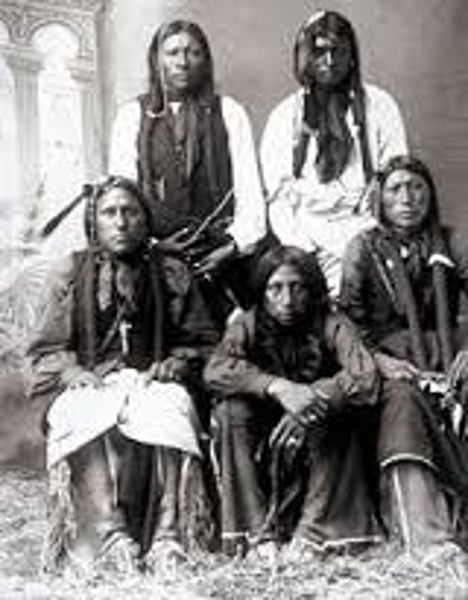
Animal Models
Animals used in research to understand how biological factors affect behaviour. The term can refer to the specific animals themselves, but can also refer to the general explanation of biology and behaviour that is gained from the animal experiment/s.
Anonymity
Removing participants' names from their data during the gathering, analyzing and publication process.

Approval from an ethics review committee
Before a study can take place, in most countries it needs to be approved by a group of people who make sure it meets the standards of ethical research.
Assessing the effectiveness of treatment
If asked about this you can discuss how we determine the extent to which a particular treatment is effective. The use of true experiments in clinical trials and also correlational methods in meta-analyses are two relevant examples to use.
Assimilate
According to Berry's model it's when an individual loses a sense of belonging to his or her heritage culture and completely adopts and adapts to the norms and values of their new culture.

Behaviour
An observable action. In IB Psychology, "behaviour" in an exam question refers to any observable action (e.g. aggression, violence, prejudice, attraction, disorders, etc.). It can also refer to emotion or cognitive processes (e.g. memory, working memory, decision making, thinking, etc.)
Biases in thinking and decision making
a.k.a cognitive biases. A mistake or error that negatively affects the accuracy of one or more cognitive processes (e.g. memory or decision making).
Biological approach to understanding human behaviour
Trying to understand human cognition and behaviour by looking at how they're affected by biological factors.
Biological treatments
Any treatment of a psychological disorder that aims to reduce symptoms (and/or address etiologies) by altering biological processes in some way. Drug therapy is a common example.

Brain development
The study of the development of various parts of the brain. The most commonly studied areas of the brain, especially in developmental psychology, are the hippocampus, the amygdala and the prefrontal cortex. These are important areas because they are linked to cognitive development and developing as a learner.
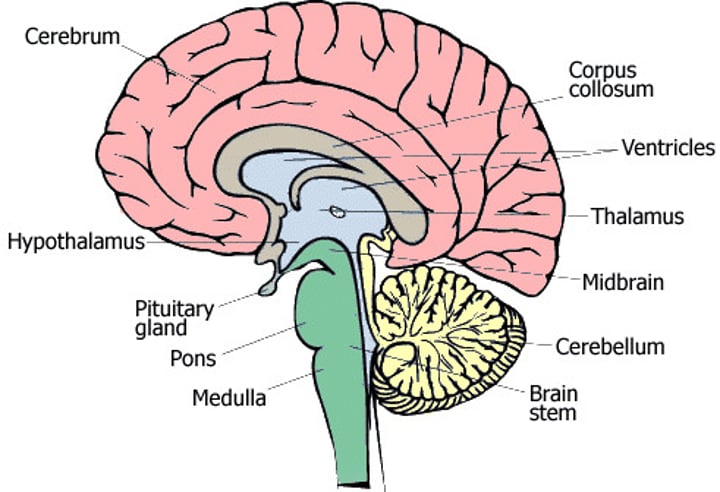
Bystanderism
The behaviour of not helping someone who is in need. The more commonly used term in psychology is "bystander effect," which refers to the phenomenon whereby the more people there are to help, the less likely someone is to help.

Case study
An in-depth investigation of an individual, small group or organization; Multiple methods are used to gather data (which is what makes them "in-depth"); They often use a combination of quantitative and qualitative methods
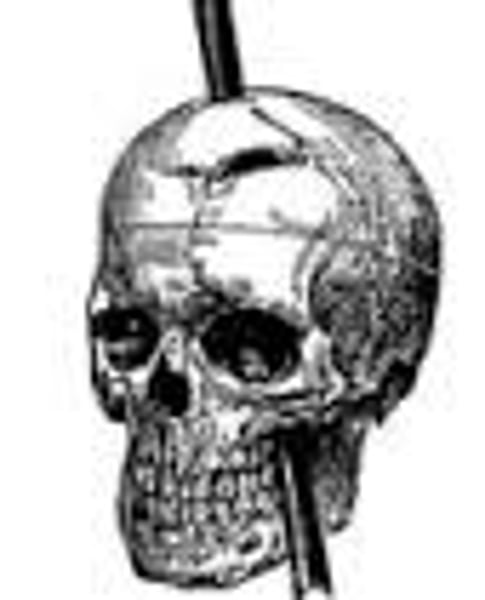
Cognition
A.k.a. Cognitive processes or mental processes. Examples include memory, working memory, decision-making, thinking, perception and judgment.
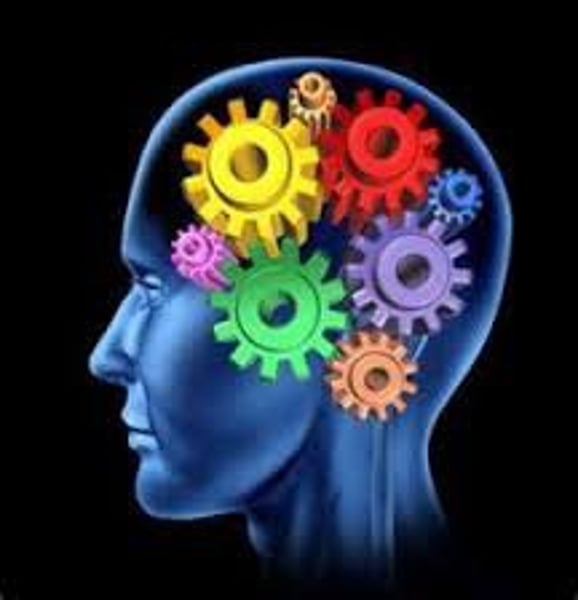
Cognitive approach to understanding human behaviour
One aspect of this approach is to understand behaviour by looking at how it can be affected by our thinking. Another aspect is simply trying to understand the cognitive processes themselves, including memory, working memory and cognitive biases and what might affect these.
Cognitive development
The study of the development of thinking, memory, working memory, attention, perception, language, judgement and other cognitive processes. Developmental psychologists study factors that affect cognitive development, such as technology, stress and the brain.
Schema
A cluster of knowledge or memory that is stored in the mind, or "organized packets of information about the world, events, or people stored in long-term memory." (Eysenck and Keane, 2010). They're also referred to as "cognitive frameworks" as they are a system for categorizing and organizing information and memory.
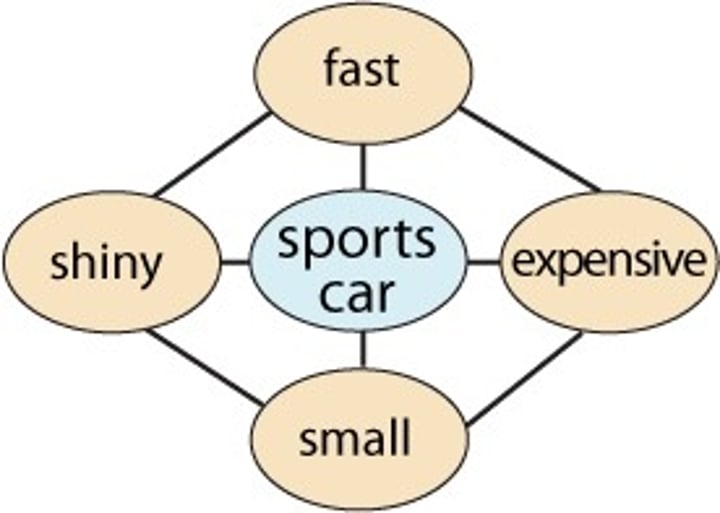
Confirmation bias
A bias in thinking and decision making. The term describes the cognitive phenomenon whereby we tend to focus on (and remember) information that is consistent with our existing beliefs.

Convenience/opportunity sampling
Gathers participants who happen to be available for study at a convenient time or place. It is based on convenience, for both researcher and participant. Depending on the nature of the study, it may lead to sampling and/or researcher bias.
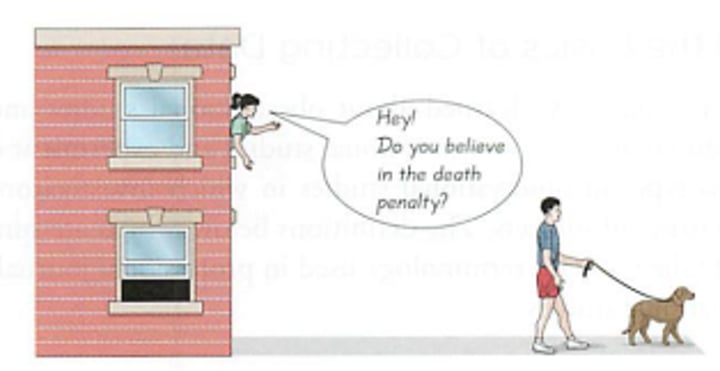
Correlational study
Does not have an IV or DV, but has co-variables; Tests the strength of relationships of co-variables by calculating a correlation coefficient; Values of coefficients range from -1.0 to 1.0
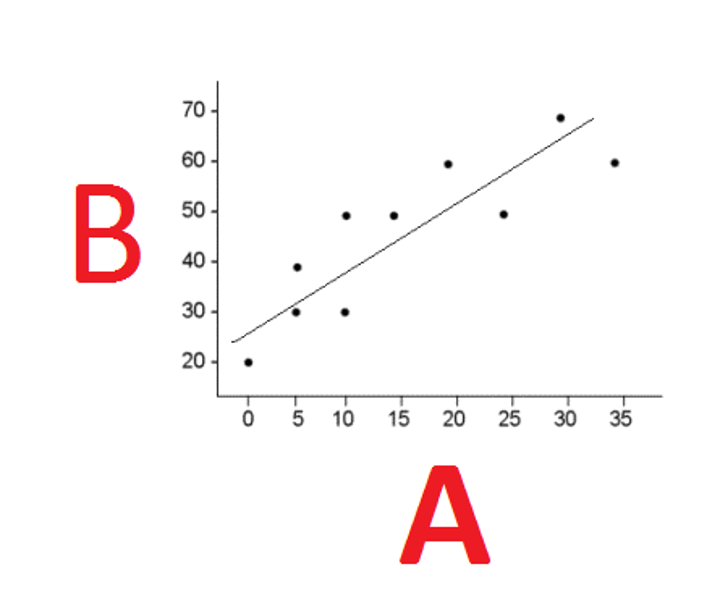
Covert and overt observations
Usually take place in naturalistic environments in qualitative research. Covert = subjects are not aware they are being observed. Overt = subjects are aware they are being observed
Credibility
Credibility refers to the extent to which something or someone can be believed and trusted. In a research context, it refers to the extent to which the results of a study accurately represent what was being studied. If a study is credible, it means they truthfully report what really happened.
Cultural dimension
A group of related cultural values. Any example includes values at two ends of a spectrum. For example, individualism/collectivism has individualistic values at one end of this spectrum and collectivistic values at the other.
Cultural groups
Any group that shares a set of norms (attitudes, beliefs, values, traditions, etc.). They can be identified by their distinct cultural norms, which are shared expectations of appropriate ways of thinking and behaving. Two examples are individualistic and collectivist cultures. Members of a culture of honor could be another example.
Debriefing
This happens at the end of a study and is when the researchers reveal the full nature of the study, including aims and results.
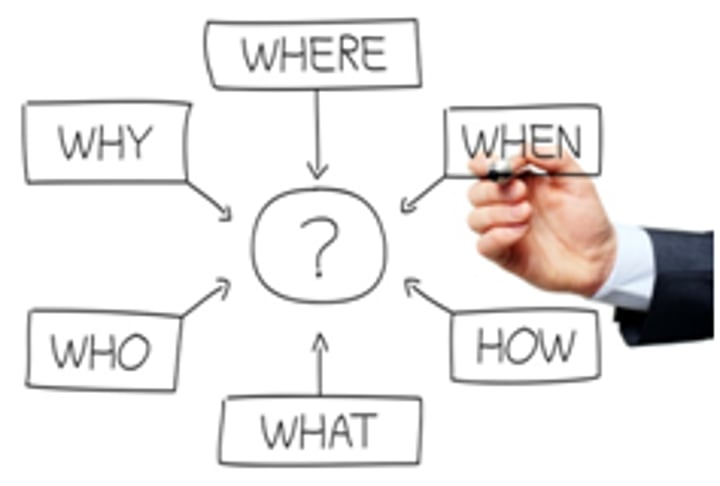
Discrimination
Treating someone differently (usually refers to negative treatment) because of the group they belong to (e.g. race, ethnicity, religion or sexuality). Social identity theory and realistic group conflict theory try to explain why this behaviour occurs.
Dual process model of thinking and decision making:
This model of thinking and decision making outlines two systems that humans rely on to make decisions - system one (fast, intuitive) and system two (slow, rational).
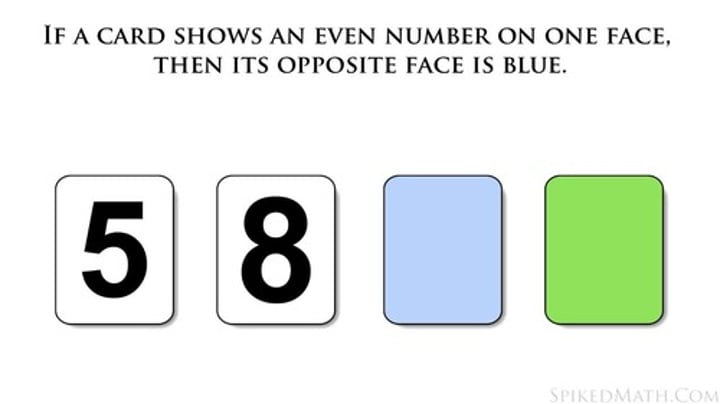
Enculturation
A broad term that refers to the process of acquiring the cultural norms and values of one's home culture. Berry defines it as a type of cultural transmission, a process "...by which cultural features of a population are transferred to its individual members." (Berry, 2010).
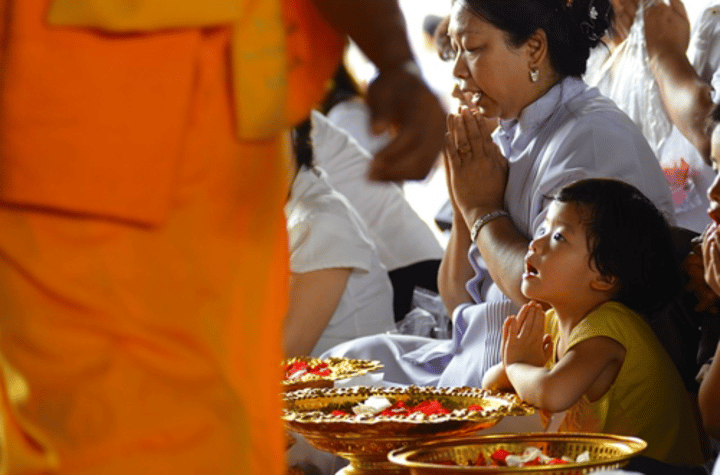
Ethical considerations
This most commonly refers to the guidelines that researchers must follow in order to ensure their research is ethical and doesn't harm their participants. These guidelines to be considered include informed consent (and parental consent), anonymity, debriefing and the right to withdraw. More generally, this term refers to how research might cause harm to others.

Etiology of abnormal psychology
This refers to the study of the origins and causes of psychological disorders. The three approaches are relevant to the study of this topic.
Evolutionary explanation of behaviour
When the behaviour exists because it helps an individual to pass on their genes by helping them to survive, procreate and/or produce healthy offspring (children).
Field experiment
Examines the effects of an IV on a DV; Takes place in a naturalistic setting; Control of extraneous variables is not always possible

Focus group interviews
A group interview (about 6-10 participants); Focus groups rely on group processes and the interaction of individuals to help reveal information that might not be revealed in individual interviews; The interviewer acts as a moderator and, if done well, the interview will resemble a group discussion
Gene
A sequence of DNA. They have an effect on behaviour through gene expression - the sending of signals from the gene to outside the cell.
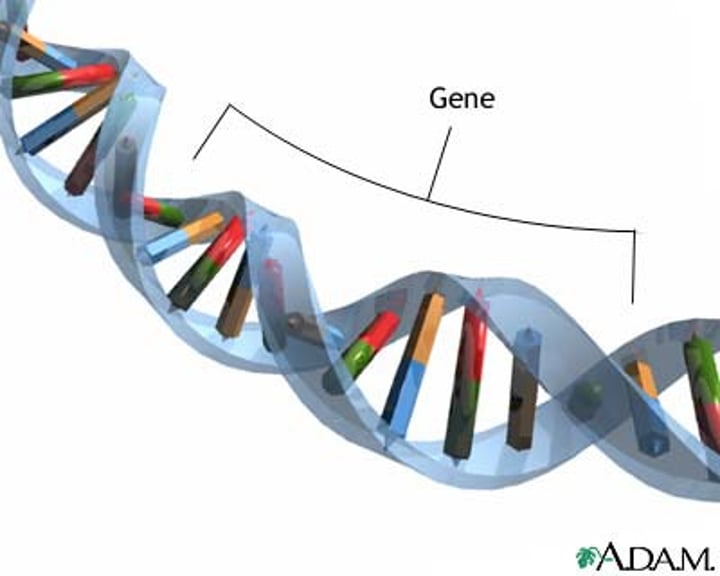
Generalizability
The extent to which conclusions from a study can be applied to (generalized) contexts beyond the study itself. This is another term for external validity.